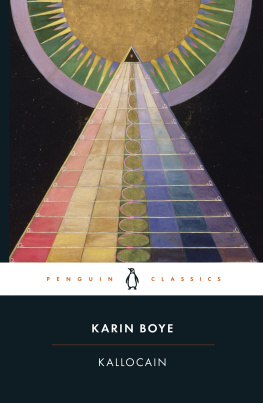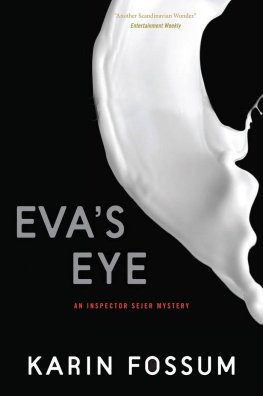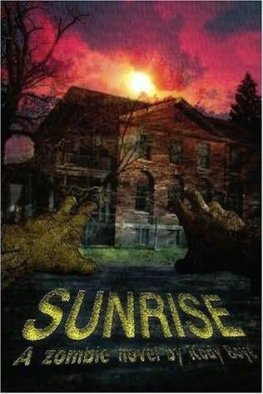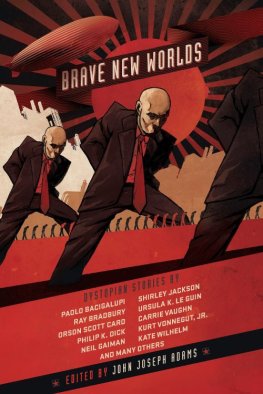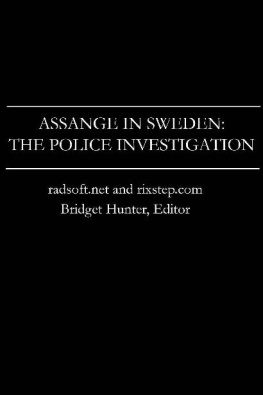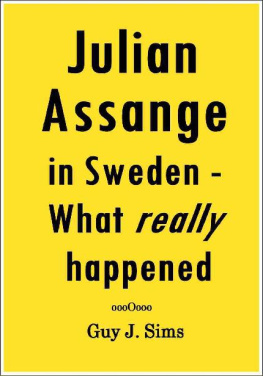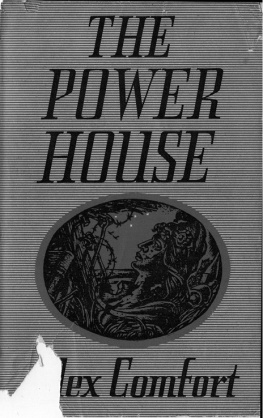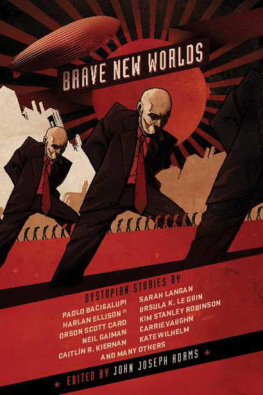About the Author
KARIN BOYE (190041) was born in Gothenburg, Sweden and studied in Stockholm and Uppsala. As a young woman she joined the international socialist and pacifist organization Clart and published her first volume of poetry while still in her early twenties. She translated T. S. Eliots The Waste Land into Swedish in 1931, and wrote several novels throughout the decade. She married a fellow writer but left her husband after undergoing psychoanalysis in Berlin and formed a lifelong relationship with a German woman, Margot Hanel. Boyes most famous book, Kallocain (1940), was partly inspired by eye-opening trips to Nazi Germany and Soviet Russia. She died from an overdose of sleeping pills the year after writing the novel.
DAVID MCDUFF s translations for Penguin Classics include Dostoyevskys Crime and Punishment, The Brothers Karamazov and The Idiot, and Babels short stories.
Karin Boye
Kallocain
A novel from the 21st century
Translated and with an Introduction by
DAVID MCDUFF

PENGUIN BOOKS
UK | USA | Canada | Ireland | Australia
India | New Zealand | South Africa
Penguin Books is part of the Penguin Random House group of companies whose addresses can be found at global.penguinrandomhouse.com.

First published in in Stockholm by Albert Bonniers Boktryckeri in 1940
This edition published in Penguin Classics 2019
Translation and introduction copyright David McDuff, 2019
The moral right of the translator has been asserted
Cover: Altarpiece, Group X, Number 1,1915, Hilma af Klint
Private Collection/Bridgeman Images
ISBN: 978-0-241-35560-2
This ebook is copyright material and must not be copied, reproduced, transferred, distributed, leased, licensed or publicly performed or used in any way except as specifically permitted in writing by the publishers, as allowed under the terms and conditions under which it was purchased or as strictly permitted by applicable copyright law. Any unauthorized distribution or use of this text may be a direct infringement of the authors and publishers rights and those responsible may be liable in law accordingly.
Introduction
Im scared, the Swedish poet, novelist and essayist Karin Boye told her friend, the writer Harry Martinson, when they discussed her acclaimed novel Kallocain (1940) on their last meeting. Her mother, after reading the book, told her that she had done it well. Do you think I did it? was the reply.
The authors fear was partly related to the political context: she was concerned that her book might draw the attention of neutral Swedens security police, who were on watch for signs of anything that might spark an invasion by Nazi Germany. She even considered revising the work and giving all of its characters Chinese names (which only a few characters in the published version have), in the hope that this would have the effect of neutralizing the text. Fortunately, the danger was avoided, and the book passed almost unnoticed by the Swedish authorities. Nonetheless, in early 1940, ordinary Swedish citizens had to be careful whom they talked to and what they talked about even what books they bought and read. Authors had to be even more careful with what they released in print.
Boyes sense of disquiet also reflected the mystery of how she had managed to write a science-fiction novel that was unlike anything she had produced before, and unlike almost anything that had appeared in earlier Swedish literature. Somehow, the war that was engulfing Europe had triggered something within her that made it possible for her to create a vision of enslaved humanity, an allegory dream-like and grotesque, yet instantly recognizable to anyone then living through the international crisis.
Kallocain was the last major work of Karin Boye, who was born in 1900 and wrote during the 1920s and 1930s. In those decades the ice-cold reasoning of Hitler and the merciless dialectics of Stalin began to dominate the political and intellectual scene, and the novel was among the international reactions of horror at what was taking place in Europe. On the books first publication, it attracted strongly positive reviews. The modernist poet Artur Lundkvist called it in the international class, while others characterized it as a work of art, with one critic suggesting that in her novel she had injected a dose of the truth drug Kallocain into the world of 1940 and enabled it to lay bare its innermost tendencies.
Boyes early writing had been subjective in character: for the most part, meditative poetry that reflected on an inward journey towards God or individual personal fulfilment and transformation. Partly as a result of economic pressure, she began to write fiction and reviews for literary journals. She also made literary translations, including Thomas Manns The Magic Mountain (1924), a work she later criticized for its male-centredness, and the socialist realist novel Cement (1925) by the Soviet author Fyodor Gladkov, which she translated from German, a language she mastered with almost native fluency and spoke with only a slight Swedish accent. At the same time, she became involved in the socialist politics of the Stockholm Clart group, whose members included the poet Gunnar Ekelf and the author, critic and translator Erik Mesterton, and in 1928, together with some of them, she made a study visit to the Soviet Union. After this visit, which seems to have consisted mainly in a drab pilgrimage between various state institutions, factories and collective farms, she became disillusioned with Soviet life and politics.
Gradually, she moved away from the groups aims and outlook, and concentrated on writing and publishing a series of novels, as well as several collections of poetry. With Mesterton, she edited the avant-garde literary magazine Spektrum, which drew its inspiration from French Surrealism, the Imagism of T. S. Eliot and Ezra Pound and also literary Freudianism. With Mestertons help, she translated Eliots The Waste Land, and then made her first experiments in psychoanalysis (which continued until her death), which were connected with her desire to confront her own homosexual and bisexual identity in terms that might make her free and independent. The analysis was mostly conducted in Berlin, under professional medical guidance, and led to her ending her heterosexual marriage and embarking on a relationship with a young German-Jewish woman, Margot Hanel, with whom she lived, more or less, until the end of her life.
During her visits to Berlin in the early 1930s, Boye witnessed the rise of Nazism at first hand. On one occasion, together with the critic Vilhelm Scharp, she attended a large election rally at the Sportpalast, where Hermann Goering delivered a speech filled with demagogic rhetoric. According to her biographer Margit Abenius:
Scharp observed Karin, who stood with her arm stretched aloft, making the Hitler salute, seemingly in complete fascination. Not to make that gesture could cost ones life neither more nor less.
All of these experiences flowed together in the writing of Kallocain, which she seems to have begun in the late autumn of 1939. Yes, these have been strange times, she wrote to a Norwegian colleague in the spring of 1940, in the context of the German invasion and occupation of Norway, the political passions have turned old friends into enemies and caused nervous crises in young people She mentioned a low point tempered by the awareness that the values we possess between one another are the most precious of all and the most easily lost. It was in this context that she created her dystopian novel, in which she portrayed not only earth-shaking world events, but also their destructive effects on individual human beings.

